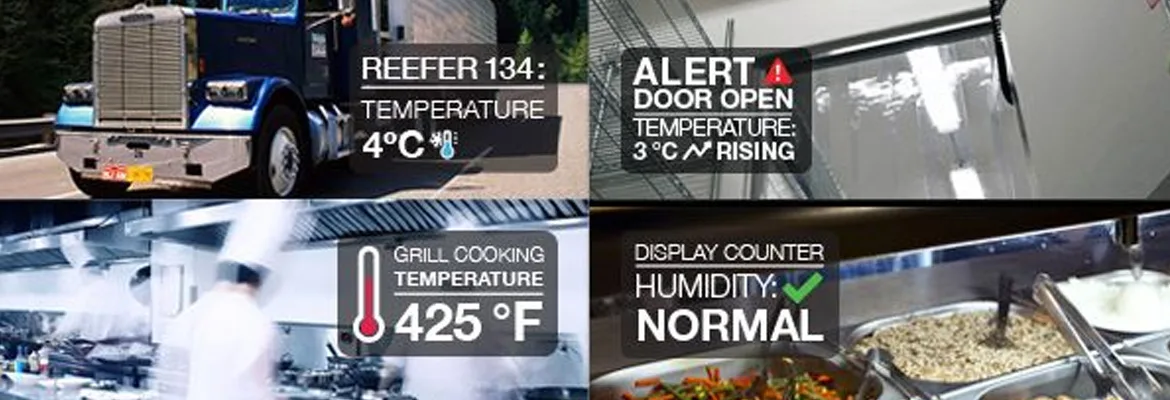IoT: Keeping food safe with temperature monitoring tools
Tech Trends · Feb 8, 2017
When it comes to storing food, there is a “4.4 degree rule”. Refrigerated food must be kept near or below 4.4 degrees Celsius or 40 degrees Fahrenheit in order to prevent the growth and spread of bacteria. It’s more than just a common sense rule. It’s the law in the US and Canada. Restaurants, supermarkets, transporters and other food handlers have to ensure that the food they store and prepare is handled at safe temperatures at all times.
The Safe Food for Canadians Act requires the temperature in fridges and freezers to be checked a minimum of 3 times a day. “But that may not be enough,” Colin Warkentin, Vice-President of Digi Cold Chain Solutions told me. “To begin with, employees are now performing tasks that are not their core responsibilities. Also, many food service businesses aren’t open 24 hours a day, and there’s nobody monitoring temperatures after hours and on days off. Say there’s a power outage at midnight in a supermarket and it lasts for a couple of hours. The managers may never know it happened unless their customers start getting sick. Or say a freezer breaks down in a restaurant at 2 a.m. When the staff get in the next morning, it may not be clear that anything has spoiled, but they would still have to throw out food worth hundreds or even thousands of dollars, and delay or even cancel opening for that day while they replace it. That’s a lot of lost business.”
Cloud solutions are changing everything
Thanks to the Internet of Things, there are now automated solutions that take temperature readings at frequent intervals around the clock. The temperature data is uploaded to the cloud, where it is available to managers in near real-time. More importantly, managers can be alerted of any temperature anomalies, often before they can become serious problems. However, the fear is that the cost of these solutions can be a roadblock for many small businesses.
“The answer is not to look for technology or hardware,” Colin explained. “Instead, they can opt for a solution as a service—or SaaS—where everything is included for a fixed monthly cost.” That’s the approach his firm has taken with Digi Honeycomb. For less than $2 a day, a business will have the temperature sensors, handheld probes, data gateways, mobile apps and analytics they need to comply with the law and save a lot of money. Plus, because it’s a fixed cost, they can easily build it into their budgeting and planning.
A fast, simple solution
Digi Honeycomb can usually be self-installed in less than an hour. Sensors are placed inside fridges and freezers, the data gateway is located in a convenient place and the application is loaded onto managers’ tablets or smartphones. There is also an available handheld probe that provides instant real-time monitoring of individual food items. A restaurant may use it to check the cooking temperature of hamburger meat, or a supermarket could use it to ensure food on display is at the correct temperature.
Once installed, the Digi Honeycomb sensors automatically check temperatures at 10 minute intervals, 24/7. If any temperatures are outside the pre-programmed acceptable range, the solution will send an instant alert to managers on their mobile app, often giving them enough time to take corrective action before a crisis develops and food has to be replaced.
While reducing the possibility of spoiled inventory may be the main driver for adopting Digi Honeycomb, there are certainly other reasons for a food service business to consider it. For example, employees who are asked to do non-core duties cannot always be relied on to do them enthusiastically or even conscientiously. Erroneous data can be recorded, and pencil-whipping—where employees note down data without reading the actual temperatures—is always a possibility.
Digi Honeycomb frees restaurant staff from the burden of manual temperature monitoring, significantly improving productivity by allowing them to get on with their core duties. What’s more, the staff never needs training on temperature recording, which generates additional cost-saving for restaurants, especially as high employee turnover is common in this segment. Finally, the solution provides accurate on demand data and reports for management and food inspectors, making it easier for food service businesses to comply with the law.
“Of course, it’s not just for restaurants and supermarkets,” says Colin. “Digi Honeycomb can be used by any business in the food supply chain, from the farm to the customer’s fork. We work with vineyards, refrigerated truck operators, wholesalers and more. Basically, if your business depends on monitoring temperatures, we can help.”
For more information on Digi Honeycomb, visit the TELUS IoT Marketplace.



